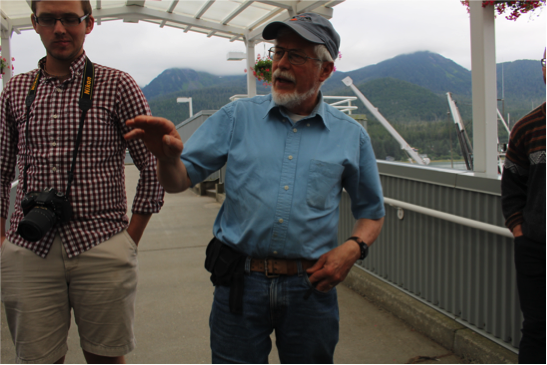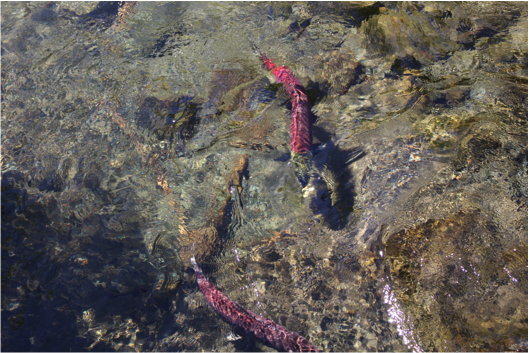Breynne Guy
Well, we finally made it to the hatchery. I can definitely say that most of my questions were answered. Ever since coming to Alaska and hanging out at the spawning grounds in front of our cabin with Courtney and Evan, I have developed an interest in the salmon. Alaska has five different types of salmon that cycle throughout the land. The five are Pink, Chum, King, Sockeye and Coho. Throughout the trip we dealt mostly with Chum, even enjoying it for dinner one night.
When we arrived at the hatchery, we got to enjoy the sight of thousands of salmon swimming in a stimulated river moving upstream. I was so excited because we finally made it to the hatchery! Rich, our tour guide met us and began to tell us the story of the salmon lifecycle and what they did at the hatchery. After spawning, the fry that survive grow and learn how to be fish until it is time for them to go and live their lives and have fun in the ocean. They then return to their spawning grounds by natural instinct as their sense of smell kicks in and they smell their way back. They go through this fascinating transformation as they ready their bodies for the “ultimate spawn” that will drain their bodies so much that they die soon after. I hope it’s worth it. About 2-5% of the fish return to their spawning home, however this 2-5% is still a lot of salmon. The entire point of the hatchery is to increase the life stage of the salmon. The hatchery that we visited, the DIPAC Macaulay Salmon hatchery, produces about 125 million salmon eggs per year. That is a lot of salmon babies, especially when there is a 99% fertilization rate! So about 2-5% of those salmon returning to their spawning grounds is still a great amount of salmon. However, many
of these salmon don’t get to spawn, for they are saved to be killed and sold for food. It’s kind of sad that their life goal isn’t fulfilled. The good thing about it is that their eggs and sperm are saved so that fertilization still happens and salmon are still born. Yay! As for the salmon being killed for food, their meat isn’t as good when they start to color up because they use a lot of their nutrients to mature. Silver salmon is the prized salmon catch for food, however mature salmon are still a very good catch and source of protein. How long the salmon stay out in the ocean and how long it takes for them to spawn varies among the different types of salmon. The pink and chum go out into the ocean as fry, however the king and some other species go out as “fingerlings”. The fingerlings are about the size of a finger and are slightly larger than the fry. This is because coho and king need more time in the incubator and fresh water (about 2 years). Maturity also varies among species. For example, king and coho take longer to mature than chum so they return to the spawning grounds later than chum.
Everything that we learned was very interesting, however my main concern was the spawning process. How different was it compared to the human process? Or other animal processes? It is in fact very similar. Males come back before females to establish a hierarchy. The biggest and toughest males get to spawn with the females of their choice. Once the females have spawned and made sure her babies were safe, both from the harsh UV rays and other females trying to spawn in the same place, the males fight for which eggs they want to fertilize. They want the very best genes to live on, which is very similar to humans and other animals. There are so many interesting facts about salmon and it was great being able to learn so much about them, here in Alaska where they are a prized possession.


